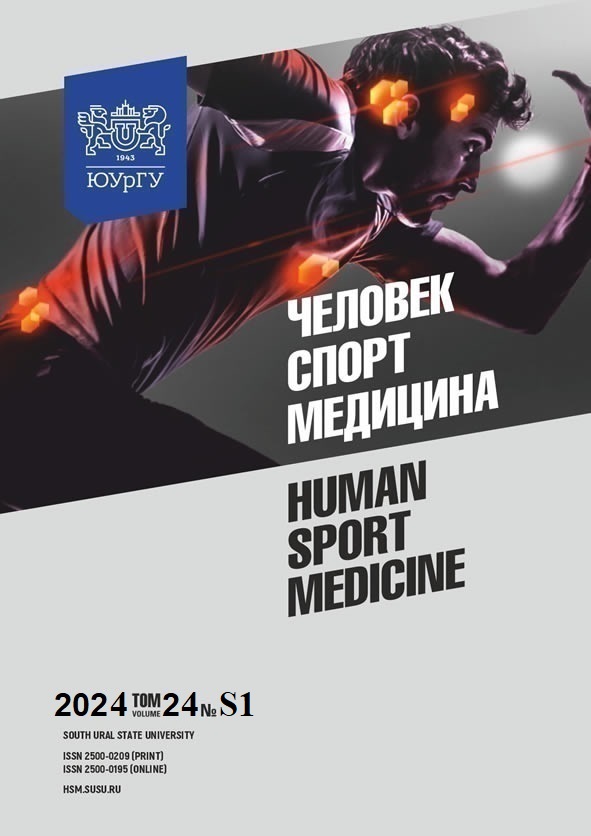REACTION OF MICROCIRCULATION TO LOCAL MUSCLE LOAD IN ATHLETES
Abstract
Aim. The aim of the study was to examine the microcirculatory responses induced by a functional test involving local muscle load in athletes. Materials and Methods. This research encompassed three distinct groups: healthy, untrained individuals (group 1, n = 12), rowers (group 2, n = 11), and athletes specializing in football and athletics (group 3, n = 10). Microcirculation was assessed using a high-frequency Doppler ultrasound, model “Minimax-Doppler K”, both at rest and following a test involving local muscle load. Results. At rest, the blood flow velocity was uniform across all subjects, with a notably lower pulsatility index observed in the rowers. Following the application of local muscle load, the control group exhibited a significant increase in systolic blood flow rate by 83.0% (p < 0.05). Conversely, athletes specializing in football and athletics displayed a decrease in systolic blood flow rate by 36.0% (p < 0.05), whereas the changes were not statistically significant for the rowers. Notably, an increase in the number of functional capillaries was exclusively observed in the athletes' groups. Conclusion. The assessment of local muscle load facilitates the identification of distinct adaptations within the microcirculatory system among athletes.
References
References on translit
Copyright (c) 2024 Human. Sport. Medicine

This work is licensed under a Creative Commons Attribution-NonCommercial-NoDerivatives 4.0 International License.















